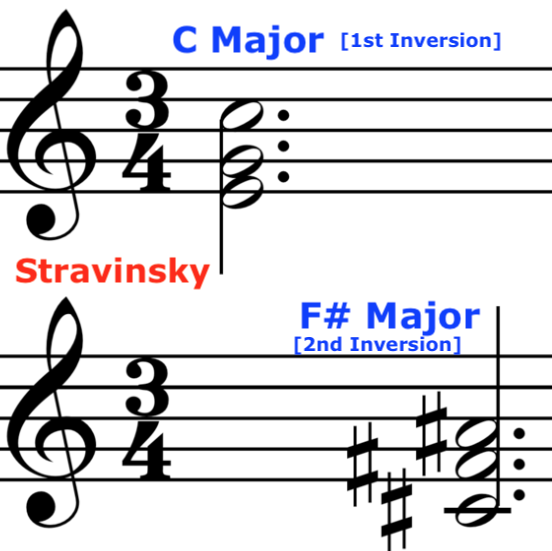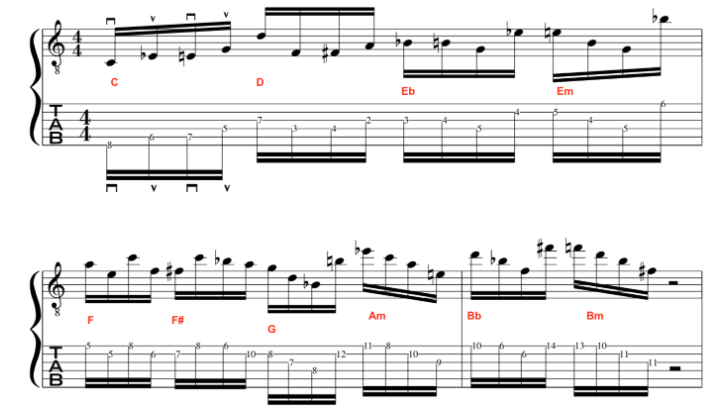PLEASE WATCH VIDEO ABOVE FOR IN DEPTH EXPLANATION:
We hear much polymodality and polytonality in modern music like, Jazz, fusion, progressive rock and 20c Classical,
Stravinsky Petrushka Chord: EXAMPLE

But, for the most common example of PolyModal “Chromaticism” here is an example by Bela Bartok: This employs the joining together of C Phrygian and C Lydian [the same root] which in turn creates a full 12 note chromatic scale.

But, there is a much more interesting and useful approach for a composer and improviser.
For this example we will join together C Dorian and C lydian [same root] and create a ten note scale:

This Polymodal Chromatic approach is unique in that it is like an alchemical process where two different modes are put into the melting pot and give birth to new chords that appear in neither of the two modes that originally went into the pot.

It doesn’t have to be Dorian and Lydian, but for this quick insight they are a good example of what can be achieved through this poly modal chromatic methodology.
EXAMPLE:

SUPERIMPOSITION EXAMPLE:

IF THIS LESSON WAS HELPFUL TO YOU THEN PLEASE SUBSCRIBE TO US BELOW ON YOUTUBE, THANKS!

